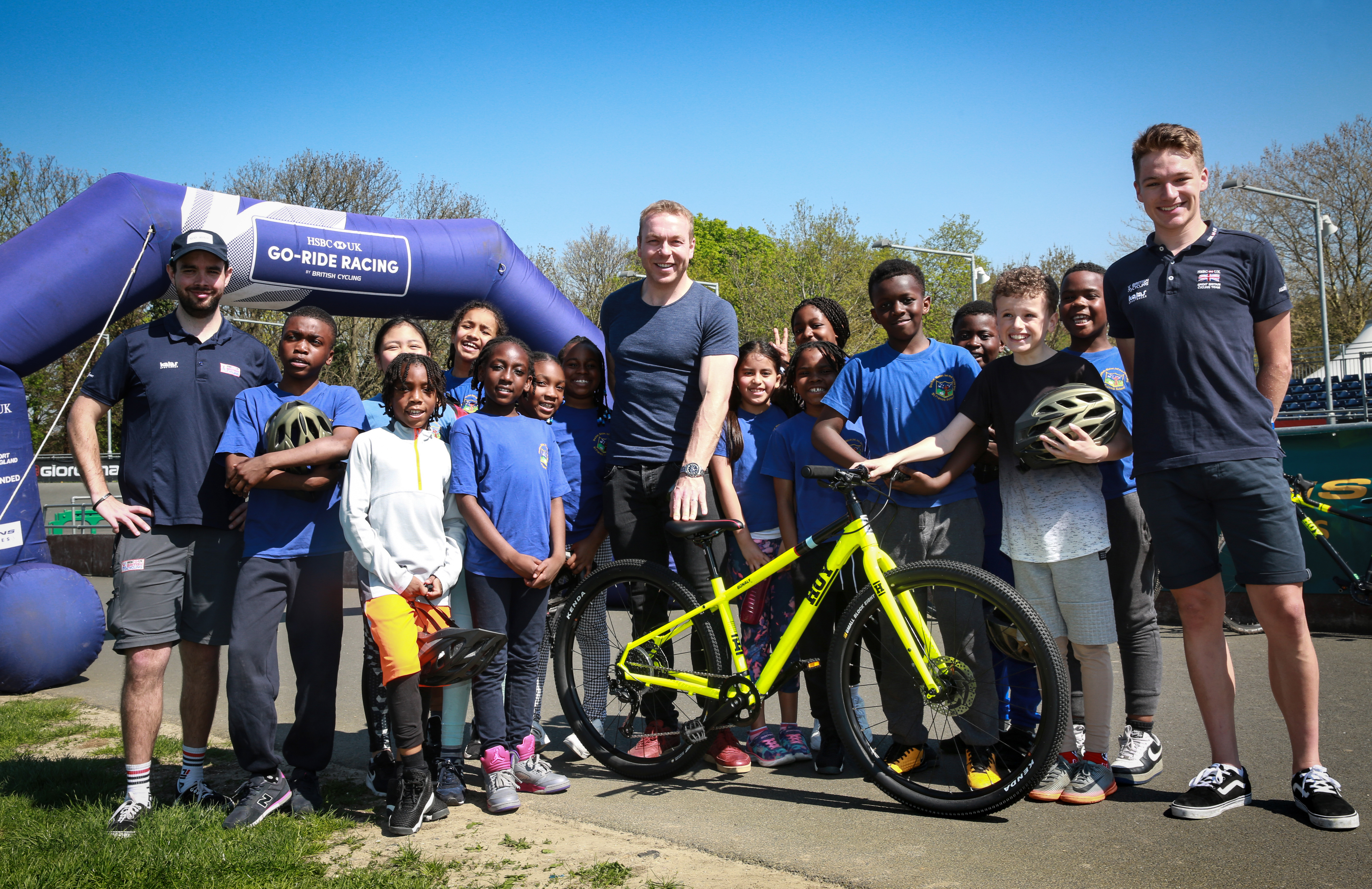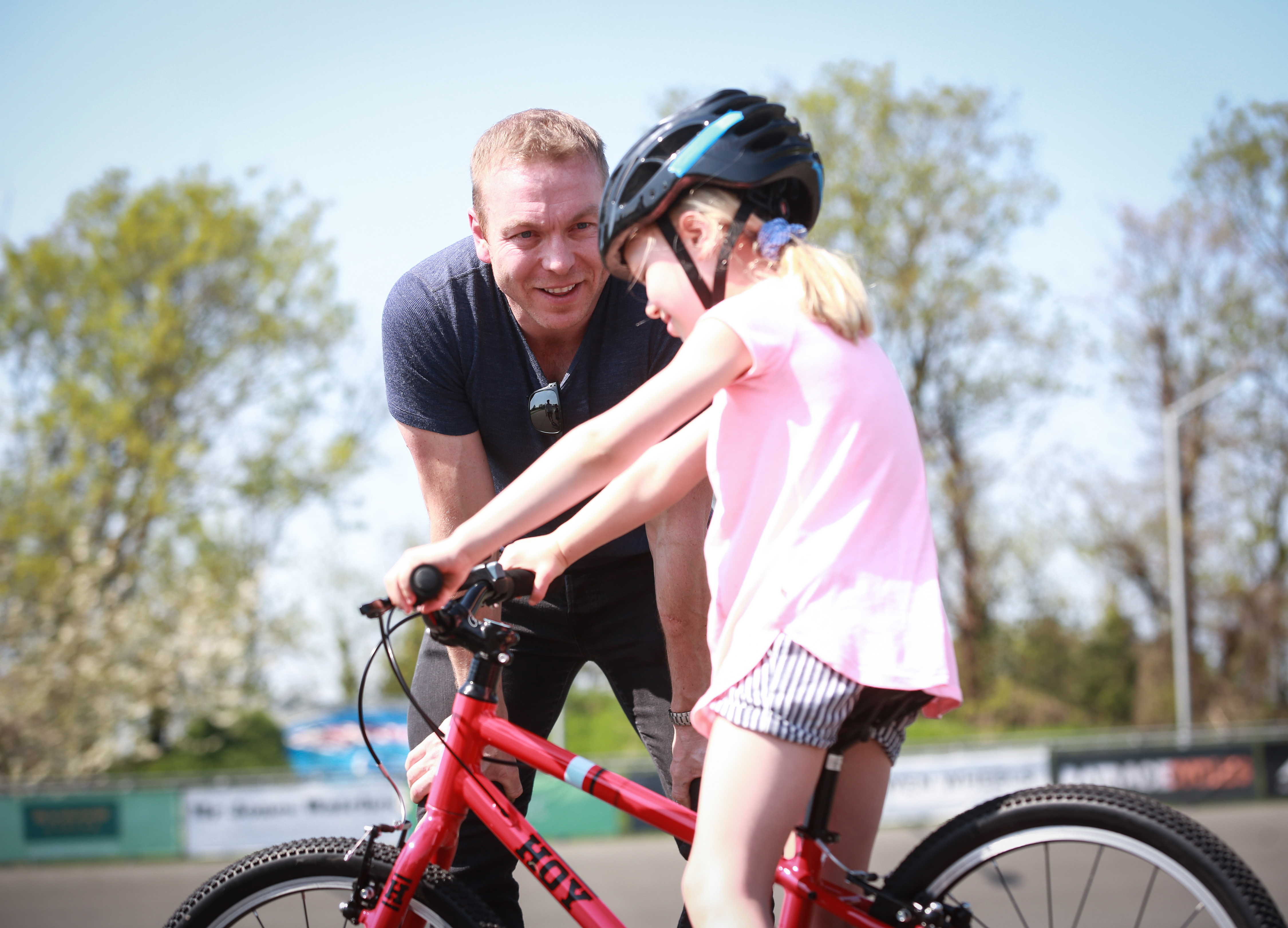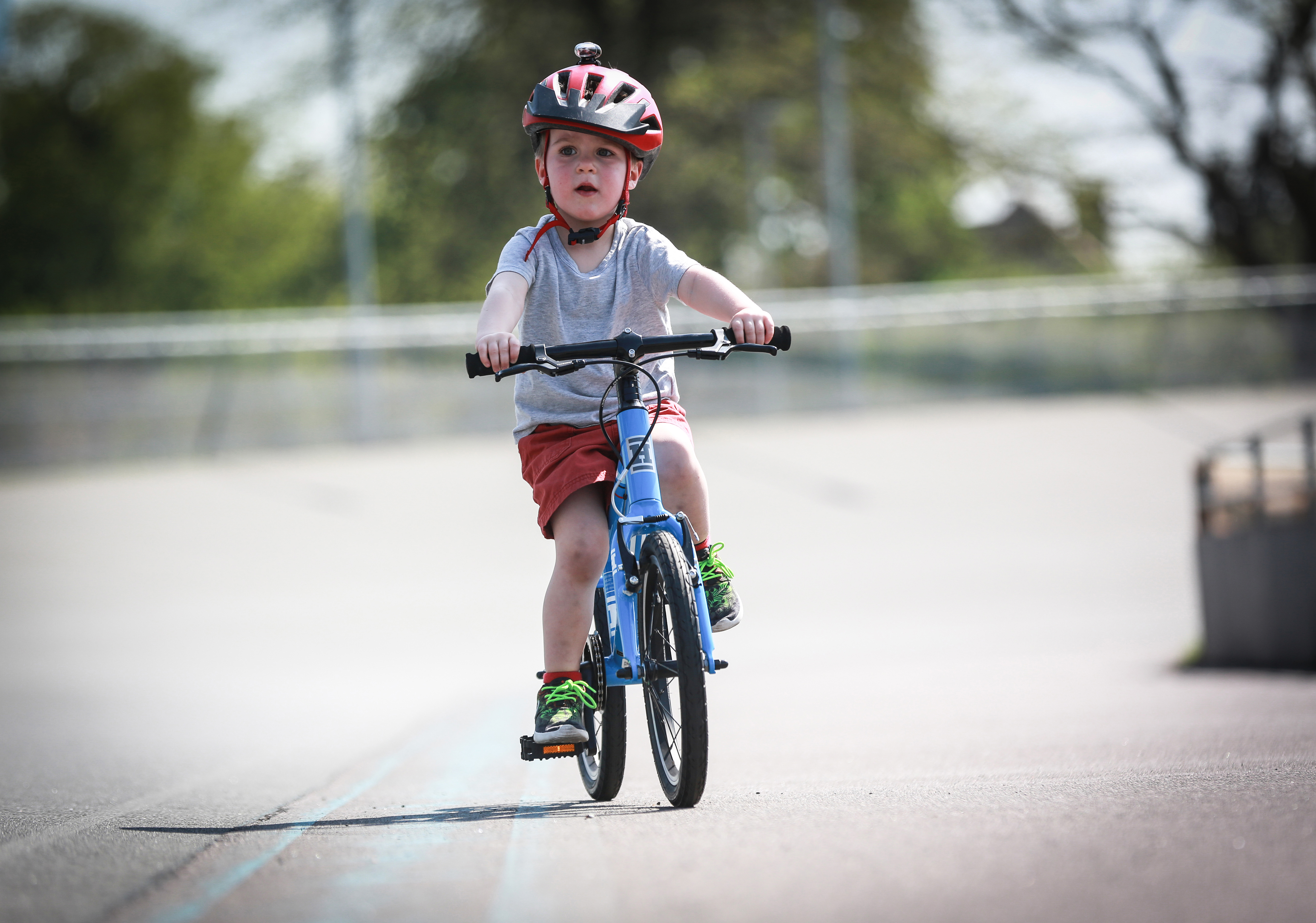Sir Chris Hoy and Evans Cycles offer their top tips to teaching your child to ride.
Location: While it might be tempting to choose a soft, grassy area for cycling practice, this will actually be more challenging to pedal on. A smooth, tarmac surface that is relatively open and away from traffic is ideal as it helps the child to pick up some rolling momentum and gauge how the bike responds to their body movements.
Avoid Stabilisers: The assumption is that early stage riding must be done with stabilisers. This isn’t recommended as the child will learn the wrong weight distribution and begin exaggerated handlebar movements instead of leaning when they are turning the bike. If you don’t have a balance bike you can take the pedals off, lower the saddle so their feet are flat on the floor and they can learn the basic of controlling and walking the bike step by step.
Bike Setup: Make sure the bike fits, rather than buying them a bike to grow into. A lighter weight bike will be much easier for the child to learn on. Ensure the saddle is the correct height. The child should only be able to rest the balls of their feet on the ground to stabilise. Though it may feel secure in the first instance to rest flat feet on the ground, the child’s knees will come up too high and interfere with steering.
Balance: Many children will have already ridden a balance bike, whether this is the case or not, it is good practice to roll on the bike without pedaling. Sit in the saddle and touch toes to the ground. Then, using big stride, pick up a bit of speed and roll as far as possible without touching the pedals.
Braking: The best way for children to grasp the concept of braking is for them to walk alongside the bike with their hands in position. At their first attempt, most children will grab the brakes firmly resulting in a sudden stop. Practice using the brakes to come to a stop in a controlled manner and remind children to prepare to put their feet down as they come to a halt, this may take a few prompts.
Supporting: Many parents will naturally harbor safety concerns in the early stages of learning. The best way to help the child from suffering a fall is to aid their balance. This should be done from behind and under their armpits or on the chest. It is better than holding the saddle and the bars so that the child becomes accustomed to the weight distribution and controlling the handlebars. It also gives you, the parents, more control over wobbles and potential crashes.
Assisting Riding: In order for the child to learn the association between pedaling and forward motion, parents should ensure they assist accordingly; if the child stops pedaling, then pushing should be stopped too.
Pedaling: Once they have gained an understanding of how to balance the bike, position the child’s feet on the pedals with their stronger leg higher up, just below the down tube. Explain that – to set off – they must push hard with their stronger leg whilst setting off with their standing leg. This may take a few practices to master. Ensure children are covering their brakes in case they set off too fast.
Progress: When the child is comfortably pedaling, let them try to pedal the bike in a straight line, stopping at a specific point. Depending on the progress thus far, this may require a little or a lot of assistance. More advanced tasks would be riding around corners, maintaining awareness of surroundings as well as riding ‘S’ bend routes or riding continuously for five minutes.
Awareness: Children can often be distracted by pedaling as it may be a new movement. Ensure they keep their head up and don’t look down at their feet. Also if there are friends or family on bikes behind them, tell them to look around before they pull the brakes and don’t stop too suddenly.




